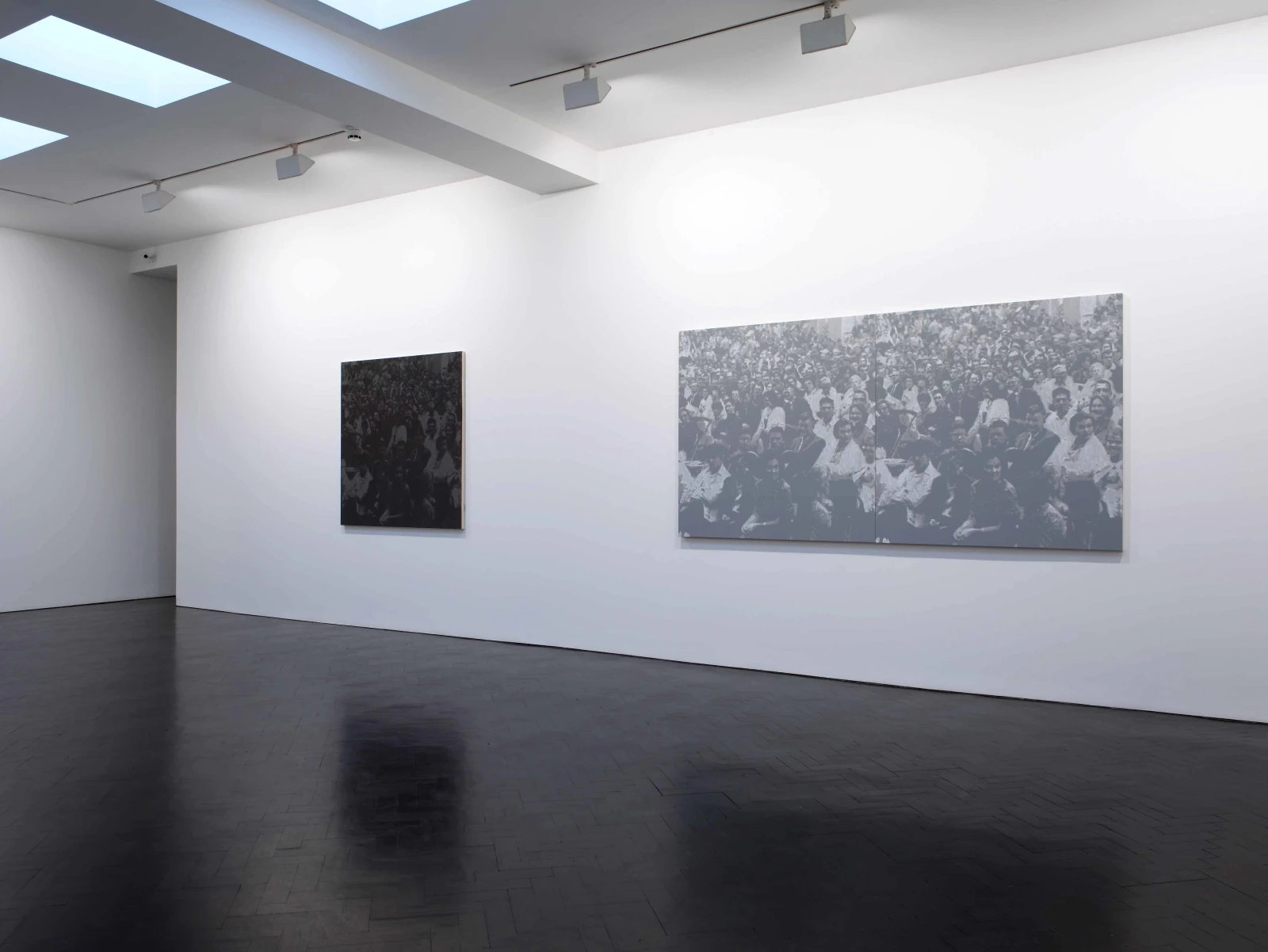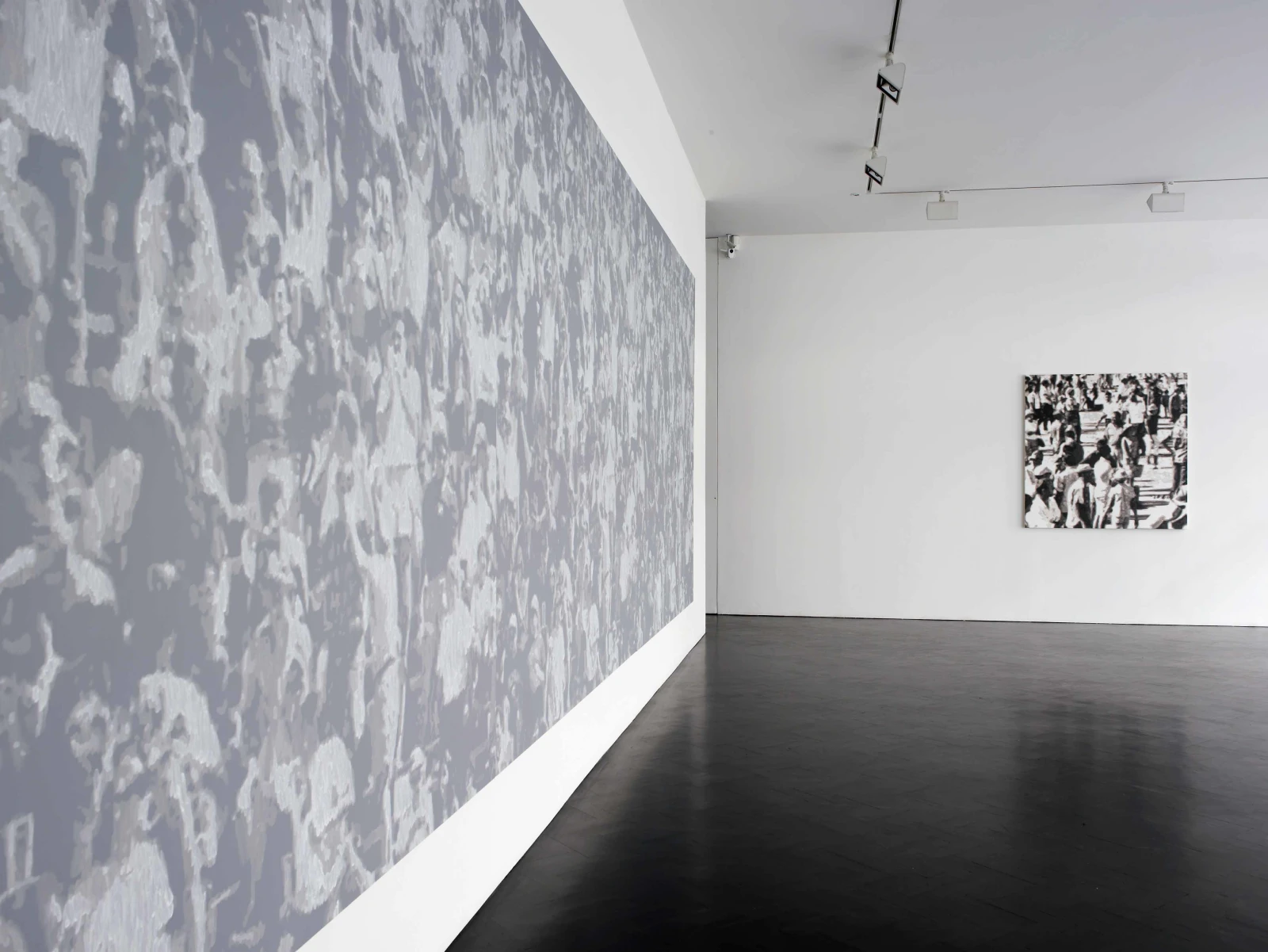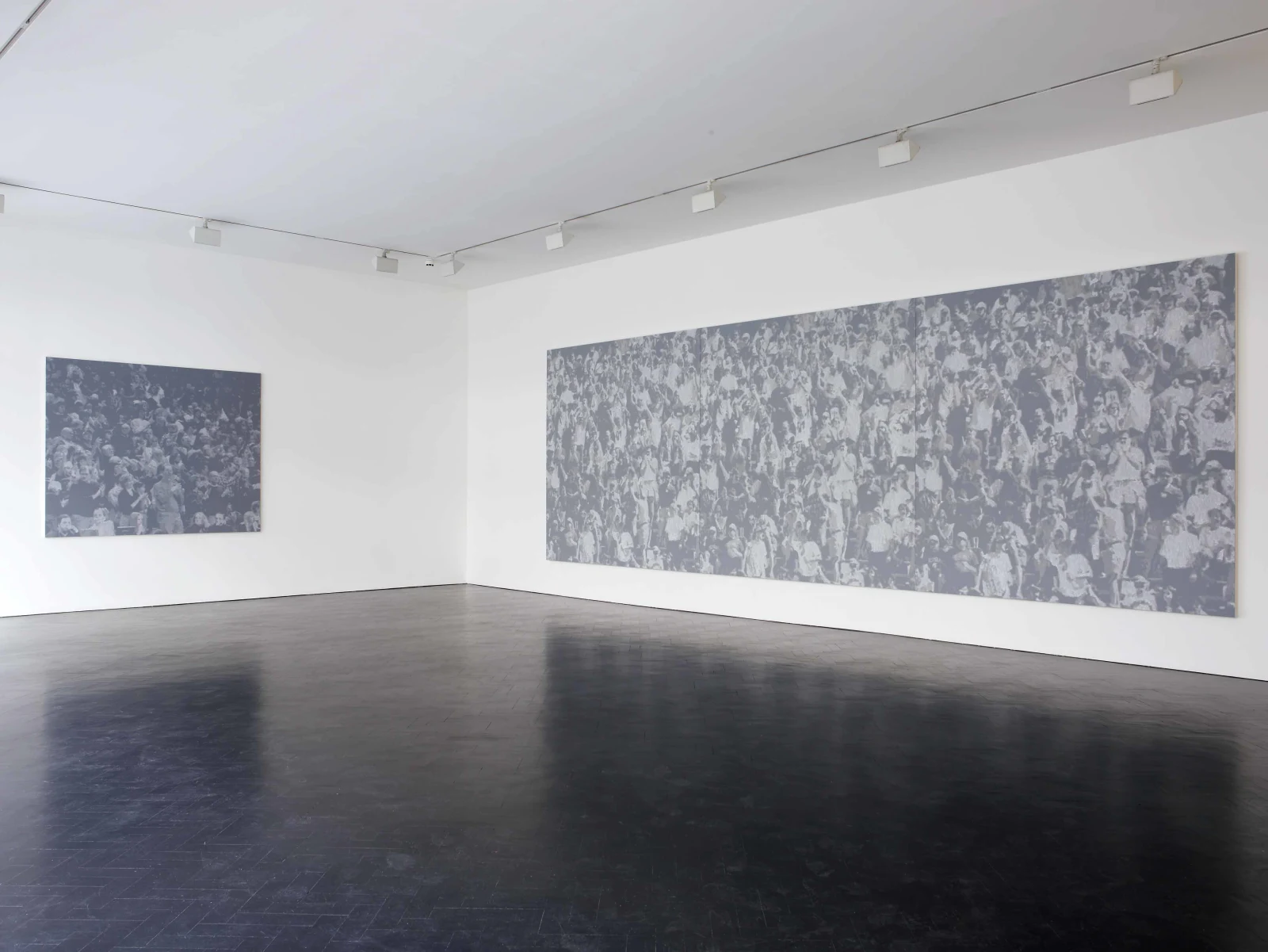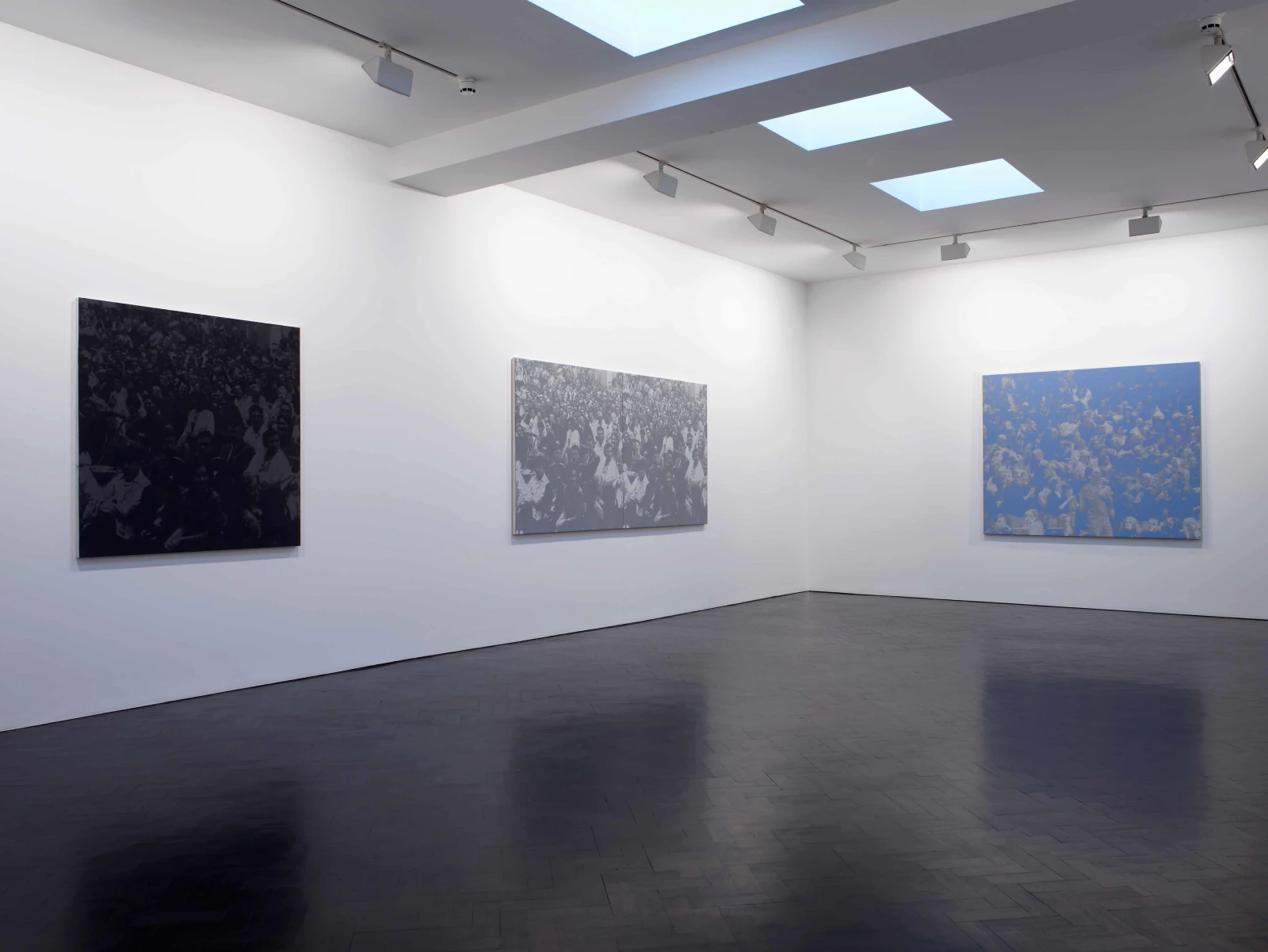
Wayne Gonzales
Overview
Stephen Friedman Gallery is pleased to present the first UK solo exhibition by American painter Wayne Gonzales.
The Pentagon from an aerial perspective and the White House pictured from its famed lawn are images so familiar in today’s culture that they themselves have become synonymous with American federal bureaucracy and power. Like the media industry which proliferates these images, Wayne Gonzales's recent work is informed both by the saturation and anonymity of stock photography and its processes. His paintings are simultaneously hand-rendered and machine-like reproductions of sites and locations that are engrained in the heart of the American social landscape.
Gonzales's process begins with digital images culled from random searches on the internet. Dates and locations of the actual images are unimportant, but content and search phrases are the catalysts for further investigation. The artist edits the image into a form that can be executed in a restricted palette of one or two colours. The paintings are loosely based on the structure of commercial reproduction technologies but aim to embrace both the abstract and representational nature of these systems.
Stephen Friedman Gallery is pleased to present the first UK solo exhibition by American painter Wayne Gonzales.
The Pentagon from an aerial perspective and the White House pictured from its famed lawn are images so familiar in today’s culture that they themselves have become synonymous with American federal bureaucracy and power. Like the media industry which proliferates these images, Wayne Gonzales's recent work is informed both by the saturation and anonymity of stock photography and its processes. His paintings are simultaneously hand-rendered and machine-like reproductions of sites and locations that are engrained in the heart of the American social landscape.
Gonzales's process begins with digital images culled from random searches on the internet. Dates and locations of the actual images are unimportant, but content and search phrases are the catalysts for further investigation. The artist edits the image into a form that can be executed in a restricted palette of one or two colours. The paintings are loosely based on the structure of commercial reproduction technologies but aim to embrace both the abstract and representational nature of these systems. The image may be visible from a distance, but upon closer inspection becomes lost in the very brushwork that defines its form: an experiential reality analogous to the difference between watching a crowd from a distance and being a participant in the action.
Gonzales investigates the physical and historical act of spectatorship in both his technique and content. For this exhibition, the artist presents a series of large crowd scene paintings. Based on a small number of original source photographs, one of the series shows a concentrated, seated audience at what may be a historical political rally. By contrast another series of paintings depicts a standing, cheering crowd watching a sporting event. Gonzales repeats these individual motifs over and over, even accumulating them in triptychs, making visible the slightest differences between each rendering.
The crowd scenes in these paintings are alienated from their distinctive social milieu, the politically charged environments of a public debate or the rowdy mass at a stock car race. Unlike the crowd imagery that became a popular theme in late nineteenth century painting, here the public is rendered passive and out of focus, suggesting that the notion of an active public consciousness is obsolete. Gonzales’s repetition of images and colours lends a blanket treatment to these very different communities, removing most identifying clues to these various experiences. Photography, once the index of time and place, becomes a source to mine and manipulate, emptying it of anything specific, and leaving only opaque representations and shadows of experience.
Although their genesis bears common ground with the photography-based cycles of the political paintings of Gerhard Richter and Andy Warhol, these paintings insist upon a shift in our perception of photographic truth. Painting here is exhausted by the infinite associative searches and links created by culture’s new short-term memory. By breaking down his source images and building them back up, Gonzales re-invests the canvas with a new relevance: history paintings for the digital age.
Wayne Gonzales’s recent solo exhibitions include Paula Cooper Gallery, New York, NY (2007) and Patrick de Brock, Knokke, Belgium (2004). Recent group exhibitions include Currents: Recent Acquisitions, Hirshhorn Museum and Sculpture Garden, Washington, DC (2007/08); The Object is the Mirror, Layr Wuestenhagen Contemporary, Vienna, Austria (2007); A Roll of the Dice Will Never Abolish Chance, Marfa Ballroom, Marfa, TX (2007); Remix – The Collection, Albright-Knox Art Gallery, Buffalo, NY (2007); Resistance Is, Whitney Museum of American Art, New York, NY (2007) and Very Abstract and Hyper Figurative, curated by Jens Hoffmann, Thomas Dane Gallery, London, UK (2007). Last year, Gonzales published Judge, an artist’s book in collaboration with the poet Vincent Katz (New York: Charta and Libellum, 2007).
Stephen Friedman Gallery is pleased to present the first UK solo exhibition by American painter Wayne Gonzales.





